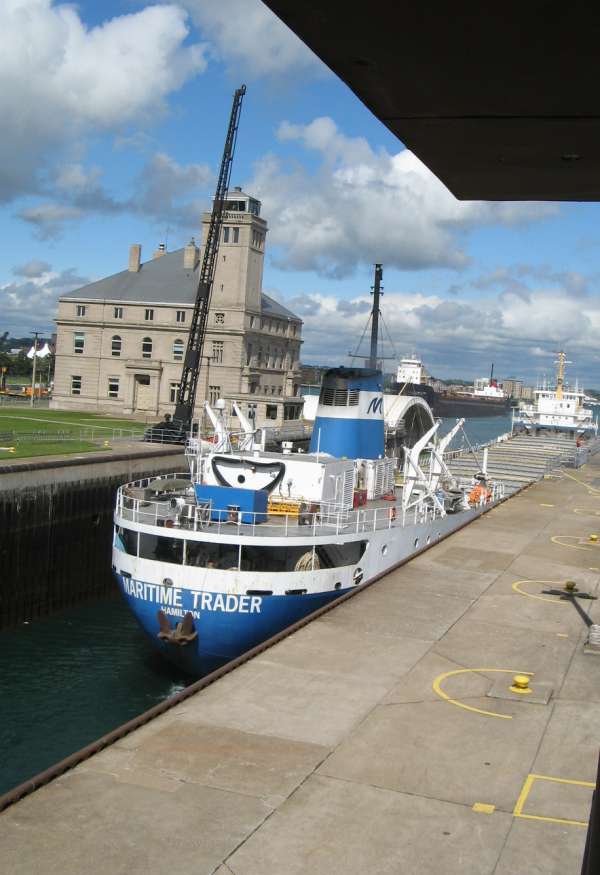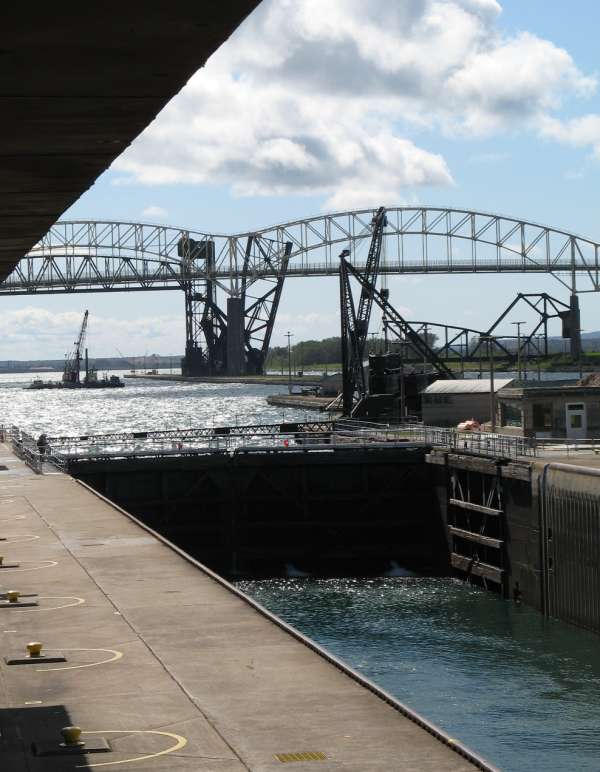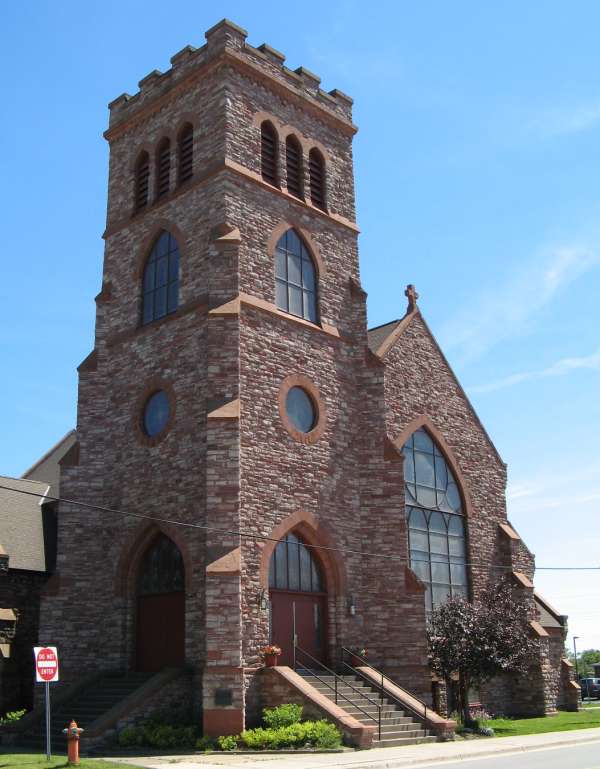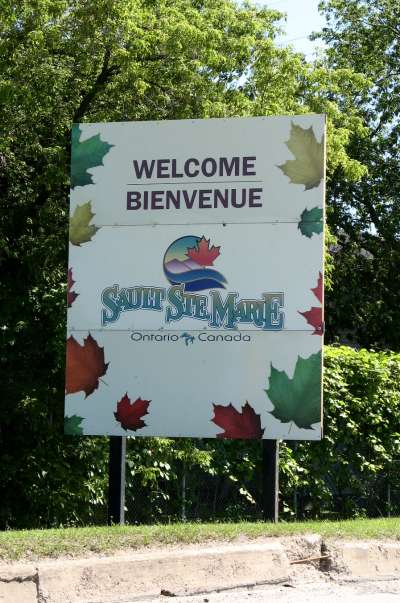Yearn to Wander
Sault Ste. Marie and the Locks
Three Days in Sault Ste. Marie, Michigan
Upon arriving in Sault Sainte Marie, Ontario, we learned the Canadian locks were closed for refurbishment. Since I wanted to watch the ships transit the Soo Locks, and because many things are more expensive in Canada, we crossed back into the US. In SSM, Michigan, we spent three days enjoying the local attractions, mostly the locks--their fact and fiction, and some unique architecture. By the way, Sault is pronounced su, and in Ojibwa (Chippewa) means waterfall in a river.
During our three days in SSM, I watched several freighters go through the locks. Something about them fascinates me, perhaps because of the size of these ships, or my interest in how things work, or my interest in transportation.
Most of the cargoes are taconite, grains, and coal. The taconite, a low grade iron ore, is shipped on through Lake Michigan, which connects with Lake Huron at the Straits of Mackinac, to Burns Harbor, Indiana, for the steel mills there. Most grain and coal cargoes go overseas through Lakes Huron, Erie and Ontario and the St. Lawrence Seaway, where at its mouth most cargoes are transferred to larger blue water (ocean-going) ships. Watching all these ships makes me want to watch operations at a blue water port. Rotterdam is calling!
So far this year, as many as sixteen freighters a day have gone through the locks in both directions, which is better than last year. That's good news because 2009's traffic was the lowest since 1938.
The fact and fiction of Lake Superior's dangers still keep people talking about the sinking of the Edmund Fitzgerald. (It was an ore boat that sank in 1975 in a gale in Lake Superior.) Perhaps the folk song keeps it alive. But being a sailor and remembering the sobering news then, I bought, and am reading, The Night the Fitz Went Down. A sea captain sailing 'just behind' the 'Fitz' documented his perspective on the day's events, which contradicts the conclusion of the US investigation.
Architecture in SSM was interesting, particularly the reddish sandstone building material. St. James Episcopal Church, a neo-Gothic church built in 1903 and now on the National Historic Register, is a good example of these materials that have been used in many structures in the area. The Chicago School influence is noticeable here,
After three beautiful days in SSM, we headed back north to Ontario to see the North Shore of Lake Superior.
During our three days in SSM, I watched several freighters go through the locks. Something about them fascinates me, perhaps because of the size of these ships, or my interest in how things work, or my interest in transportation.
Most of the cargoes are taconite, grains, and coal. The taconite, a low grade iron ore, is shipped on through Lake Michigan, which connects with Lake Huron at the Straits of Mackinac, to Burns Harbor, Indiana, for the steel mills there. Most grain and coal cargoes go overseas through Lakes Huron, Erie and Ontario and the St. Lawrence Seaway, where at its mouth most cargoes are transferred to larger blue water (ocean-going) ships. Watching all these ships makes me want to watch operations at a blue water port. Rotterdam is calling!
So far this year, as many as sixteen freighters a day have gone through the locks in both directions, which is better than last year. That's good news because 2009's traffic was the lowest since 1938.
The fact and fiction of Lake Superior's dangers still keep people talking about the sinking of the Edmund Fitzgerald. (It was an ore boat that sank in 1975 in a gale in Lake Superior.) Perhaps the folk song keeps it alive. But being a sailor and remembering the sobering news then, I bought, and am reading, The Night the Fitz Went Down. A sea captain sailing 'just behind' the 'Fitz' documented his perspective on the day's events, which contradicts the conclusion of the US investigation.
Architecture in SSM was interesting, particularly the reddish sandstone building material. St. James Episcopal Church, a neo-Gothic church built in 1903 and now on the National Historic Register, is a good example of these materials that have been used in many structures in the area. The Chicago School influence is noticeable here,
After three beautiful days in SSM, we headed back north to Ontario to see the North Shore of Lake Superior.
ms
2010-07-01
Copyright © 2010-2019 Marie N. Sprandel, All rights reserved.
Contact us at:
info@yearntowander.com




